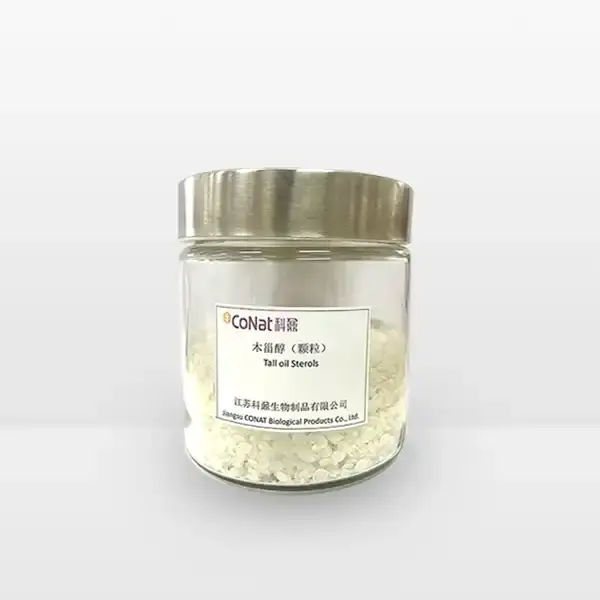- English
- French
- German
- Portuguese
- Spanish
- Russian
- Japanese
- Korean
- Arabic
- Greek
- German
- Turkish
- Italian
- Danish
- Romanian
- Indonesian
- Czech
- Afrikaans
- Swedish
- Polish
- Basque
- Catalan
- Esperanto
- Hindi
- Lao
- Albanian
- Amharic
- Armenian
- Azerbaijani
- Belarusian
- Bengali
- Bosnian
- Bulgarian
- Cebuano
- Chichewa
- Corsican
- Croatian
- Dutch
- Estonian
- Filipino
- Finnish
- Frisian
- Galician
- Georgian
- Gujarati
- Haitian
- Hausa
- Hawaiian
- Hebrew
- Hmong
- Hungarian
- Icelandic
- Igbo
- Javanese
- Kannada
- Kazakh
- Khmer
- Kurdish
- Kyrgyz
- Latin
- Latvian
- Lithuanian
- Luxembou..
- Macedonian
- Malagasy
- Malay
- Malayalam
- Maltese
- Maori
- Marathi
- Mongolian
- Burmese
- Nepali
- Norwegian
- Pashto
- Persian
- Punjabi
- Serbian
- Sesotho
- Sinhala
- Slovak
- Slovenian
- Somali
- Samoan
- Scots Gaelic
- Shona
- Sindhi
- Sundanese
- Swahili
- Tajik
- Tamil
- Telugu
- Thai
- Ukrainian
- Urdu
- Uzbek
- Vietnamese
- Welsh
- Xhosa
- Yiddish
- Yoruba
- Zulu
How is Crude Tall Oil Distilled?
Crude Tall Oil (CTO) is a valuable by-product of the kraft pulping process, primarily derived from pine wood. It is a complex mixture of fatty acids, rosin acids, and neutrals. Distilling Crude Tall Oil is a sophisticated industrial process that separates these components into high-purity fractions, which are essential for various industries such as chemicals, biofuels, and adhesives. This blog will explore the distillation process, its significance, and answer some common questions related to Crude Tall Oil.
What Are the Steps Involved in Distilling Crude Tall Oil?
The distillation of Crude Tall Oil involves multiple stages to separate its components efficiently. Initially, Crude Tall Oil is pre-treated to remove impurities like water and solid residues. This step ensures smoother operation during distillation. The pre-treated CTO is then fed into a distillation column where it is heated under vacuum conditions to prevent thermal degradation. The first fraction collected is tall oil fatty acids (TOFA), which are used in soaps, lubricants, and biofuels. The next fraction is tall oil rosin (TOR), applied in adhesives, inks, and rubber manufacturing. The remaining residue, known as pitch, is often used as a binder or fuel source. This meticulous process maximizes the yield and purity of each fraction, making Crude Tall Oil a sustainable resource for industrial applications.
- Pre-treatment of Crude Tall Oil: Before distillation, Crude Tall Oil undergoes pre-treatment to eliminate impurities. This involves settling tanks where water and solids are separated from the oil. Dehydration is crucial because water can cause operational issues during distillation, such as foaming or inefficient heating. The pre-treated Crude Tall Oil is then filtered to ensure no particulate matter remains, which could clog the distillation equipment. This step enhances the efficiency of the subsequent distillation process and improves the quality of the final products. Proper pre-treatment is essential for achieving high-purity fractions and minimizing energy consumption during distillation.
- Fractional Distillation Process: The core of distilling Crude Tall Oil is fractional distillation under reduced pressure. The pre-treated oil is heated in a distillation column where temperatures range between 200°C and 300°C. Vacuum conditions lower the boiling points of the components, reducing the risk of decomposition. As the vapor rises through the column, it condenses at different heights based on volatility. Tall oil fatty acids, being lighter, are collected first, followed by rosin acids. The heavy residue, or pitch, is drawn from the bottom. This process requires precise control of temperature and pressure to ensure optimal separation of Crude Tall Oil components.
- Post-Distillation Treatment: After distillation, the fractions often undergo additional refining. Tall oil fatty acids might be hydrogenated to improve stability, while rosin acids can be isomerized or dimerized for specific applications. These treatments enhance the properties of the derivatives, making them suitable for high-value products. The pitch residue is typically cooled and solidified for use in industrial binders or as an energy source. Post-distillation steps ensure that every part of Crude Tall Oil is utilized efficiently, supporting sustainability and economic viability in industries like biofuels and chemicals.

Why Is Vacuum Distillation Used for Crude Tall Oil?
Vacuum distillation is preferred for Crude Tall Oil due to its high boiling point components and sensitivity to heat. Operating under reduced pressure lowers the boiling points, allowing separation at lower temperatures. This prevents thermal cracking or polymerization of fatty and rosin acids, which could degrade the quality of the derivatives. Vacuum distillation also reduces energy consumption compared to atmospheric distillation, making it cost-effective and environmentally friendly. This method ensures that Crude Tall Oil is processed efficiently, yielding high-purity products like TOFA and TOR without compromising their chemical integrity.
- Advantages of Vacuum Conditions: Vacuum distillation minimizes thermal stress on Crude Tall Oil components. By lowering the pressure, the boiling points of fatty acids and rosin acids are reduced, enabling separation at temperatures below 300°C. This prevents decomposition and unwanted chemical reactions, such as oxidation or polymerization, which could form residues and reduce yield. Additionally, vacuum operation enhances the purity of the fractions by allowing sharper separation between components. This is crucial for producing high-quality derivatives from Crude Tall Oil that meet industry standards for applications in biofuels, adhesives, and beyond.
- Energy Efficiency and Cost-Effectiveness: Using vacuum distillation for Crude Tall Oil reduces energy requirements significantly. Lower temperatures mean less heat input, saving fuel and operational costs. The process also minimizes the need for cooling water, as the condenser operates more efficiently under vacuum. This makes the distillation of Crude Tall Oil not only economically viable but also environmentally sustainable by lowering carbon emissions. Industries benefit from reduced production costs while maintaining high output quality, making vacuum distillation a preferred method for processing Crude Tall Oil on a large scale.
- Impact on Product Quality: The use of vacuum distillation directly influences the quality of Crude Tall Oil derivatives. By avoiding high temperatures, the natural properties of fatty acids and rosin acids are preserved, resulting in products with better color, odor, and chemical stability. High-purity TOFA and TOR are essential for demanding applications like food-grade additives or pharmaceutical precursors. Vacuum distillation ensures that Crude Tall Oil is processed gently, maintaining the integrity of its components and enhancing the value of the end products in various industrial sectors.
What Are the Applications of Distilled Crude Tall Oil Products?
Distilled Crude Tall Oil products have diverse applications across industries. Tall oil fatty acids (TOFA) are used in the production of soaps, detergents, and lubricants due to their excellent emulsifying properties. They also serve as raw materials for biofuels, contributing to renewable energy solutions. Tall oil rosin (TOR) is integral to adhesives, paints, and printing inks, providing tackiness and durability. The pitch residue is utilized as a binder in asphalt or as a fuel source. These applications highlight the versatility of Crude Tall Oil derivatives, promoting sustainability and reducing reliance on petroleum-based products.
- Industrial Uses of TOFA and TOR: Tall oil fatty acids from Crude Tall Oil are valued in manufacturing surfactants, corrosion inhibitors, and bioplastics. Their long-chain structure makes them ideal for creating biodegradable products. Rosin acids are used in paper sizing, improving water resistance in paper products. Additionally, both fractions find roles in the chemical industry as intermediates for esters and dimers. The broad utility of Crude Tall Oil derivatives supports eco-friendly innovations and reduces environmental impact by replacing synthetic alternatives with renewable resources.
- Biofuel and Energy Production: Distilled Crude Tall Oil plays a significant role in biofuel production. TOFA can be converted into biodiesel through esterification, offering a sustainable alternative to fossil fuels. The pitch residue, with its high calorific value, is burned as a biomass fuel in industrial boilers, generating energy and reducing waste. This aligns with global efforts to promote renewable energy sources and decrease carbon footprints. Crude Tall Oil thus contributes to a circular economy, where by-products are efficiently utilized for energy and material production.
- Future Prospects and Innovations: Research continues to expand the applications of Crude Tall Oil derivatives. Advances in catalysis and biotechnology are enabling the production of high-value chemicals like phytosterols and vitamin E from CTO. These innovations enhance the economic value of Crude Tall Oil and support sustainable development. As industries seek greener alternatives, the demand for distilled Crude Tall Oil products is expected to grow, driving further improvements in distillation technologies and application methodologies.
Conclusion
In summary, the distillation of Crude Tall Oil is a critical process that efficiently separates its components into valuable fractions like fatty acids, rosin, and pitch. Utilizing vacuum distillation ensures high purity and quality while minimizing energy consumption. The derivatives find extensive applications in biofuels, chemicals, and adhesives, underscoring the importance of Crude Tall Oil as a sustainable resource. Continued innovations promise even broader uses, reinforcing its role in promoting environmental sustainability and industrial efficiency.
Jiangsu CONAT Biological Products Co., Ltd. was established in December 2013 and is a joint-stock enterprise located in the national chemical park, Taixing Economic Development Zone, Jiangsu Province; with a registered capital of 299 million yuan, it covers an area of 140 acres and has 10,000 square meters of standardized factory buildings. It is a green, low-carbon, and efficient high-end VE factory with an advanced design and reasonable layout. It currently has 150 employees and 20 R&D personnel. It is a specialized manufacturer of phytosterol, natural vitamin E, and their derivative products. It has complete sets of research, production, and testing equipment and owns a highly qualified technical team with years of experience in the production management of phytosterol and natural vitamin E. Reach out to us at sales@conat.cn.
References
1. "Distillation and Applications of Tall Oil," Journal of Chemical Technology and Biotechnology.
2. "Vacuum Distillation of Crude Tall Oil for Fatty Acid and Rosin Recovery," Industrial & Engineering Chemistry Research.
3. "Sustainable Biofuel Production from Tall Oil Derivatives," Renewable Energy Reviews.
4. "Advances in Tall Oil Rosin Processing," Pulp and Paper Science Journal.
5. "Industrial Utilization of Crude Tall Oil Pitch," Biomass Conversion and Biorefinery.
6. "Phytosterol Extraction from Tall Oil Fractions," Food and Bioproducts Processing.
YOU MAY LIKE
